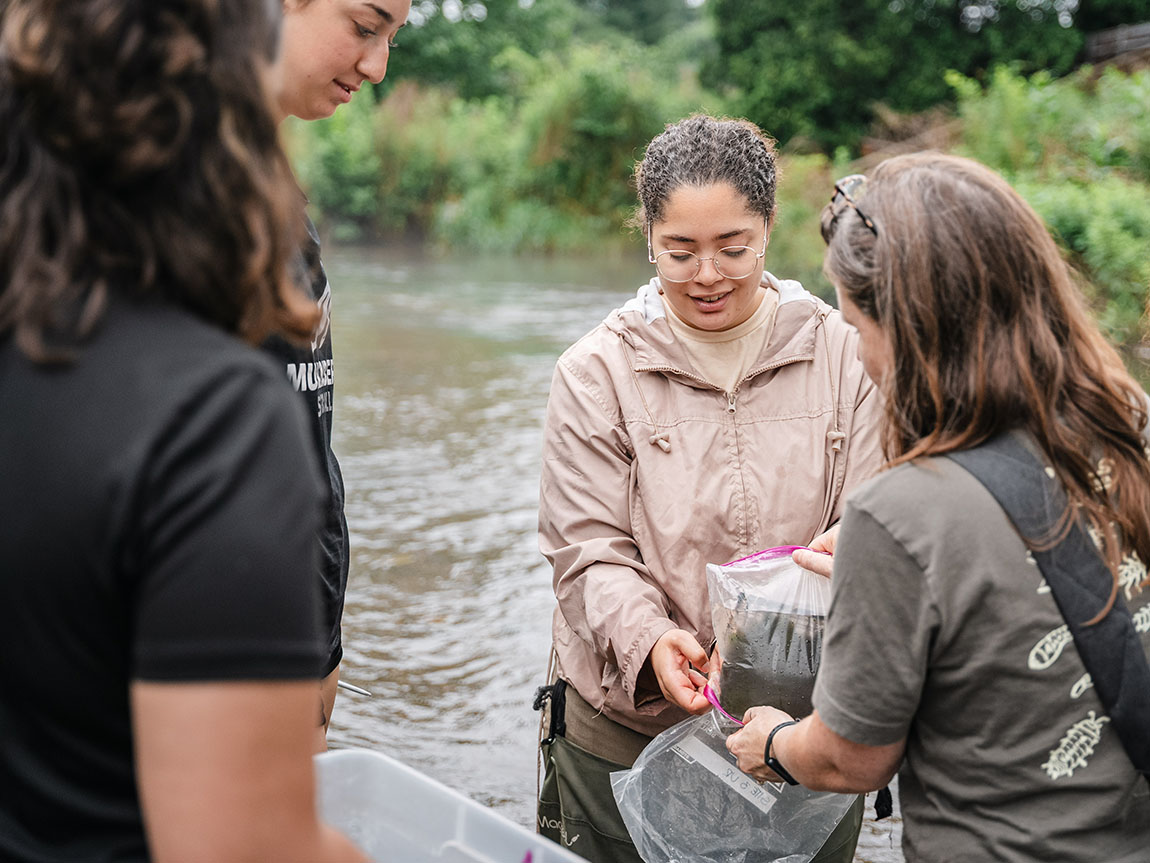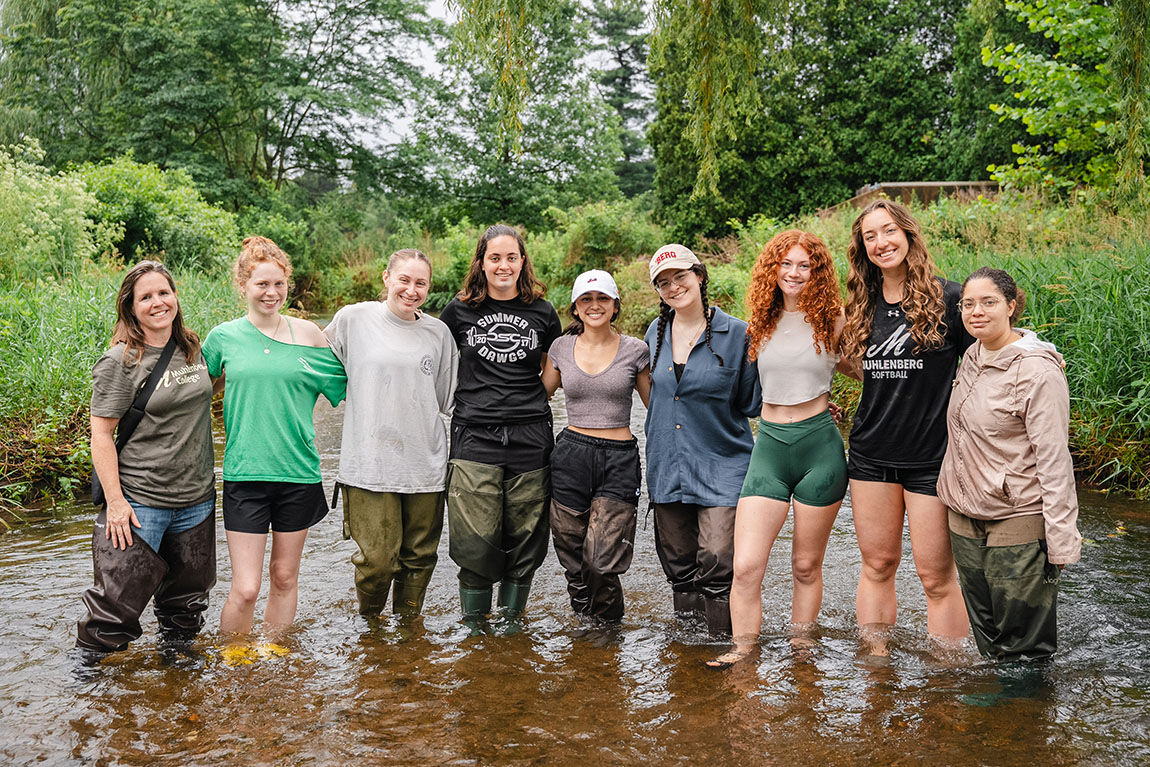Summer Research: Victoria Diaz ’28 Helps Assess Stream Health
Diaz, an environmental science major, worked to capture and count small aquatic organisms in nearby Little Cedar Creek as part of an ongoing project led by Professor of Biology Erika Iyengar and Senior Lecturer of Environmental Science Karen Tuerk.Thursday, July 10, 2025 11:00 AM
 Victoria Diaz ’28 collects samples in Little Cedar Creek. Photos by Joe Romano ’23
Victoria Diaz ’28 collects samples in Little Cedar Creek. Photos by Joe Romano ’23More than 70 Muhlenberg students are conducting research this summer — about 60 on campus, about 10 more remotely, and a handful of others through other institutions.
Research challenges students to apply what they’ve learned in the classroom, hone their discipline-specific skills, and make an impact in their field. Learn more about Muhlenberg’s transformative summer research program.
Victoria Diaz ’28
Hometown: Yonkers, New York
Major: Environmental science
Describe your summer research.
Little Cedar Creek has been deemed impaired by the Pennsylvania Department of Environmental Protection. This means it doesn’t have the capability of fully supporting stream life and is in some way polluted. Our goal is to pinpoint where in Little Cedar Creek the pollution problem is occurring and determine what exactly is causing the problem.
We’re assessing the health of Little Cedar Creek by capturing and counting macroinvertebrates, which are small aquatic organisms that live in the stream. These creatures are good indicators of water quality because some are highly sensitive to pollution.
By calculating the percentage of pollution-sensitive invertebrates, we can get a clearer picture of the stream’s overall health and look at different areas that may be more affected by pollution.

Why are you interested in research generally and in this project specifically?
I was originally drawn to this research project because I thought the concept of picking bugs out of a stream [sounded] really fun. I wanted to start research because it would show me what fieldwork is like, especially as an environmental science major. This project was the perfect way to test how everyday fieldwork is and if I would want to pursue something like it in the future.
“I wanted to start research because it would show me what fieldwork is like, especially as an environmental science major. This project was the perfect way to test how everyday fieldwork is and if I would want to pursue something like it in the future.”
What are the most challenging and rewarding parts of your research?
I think the most challenging part of this research project has been stream walking. It's actually way harder than you would think and very exhausting. I thought walking in a stream would be easy but I was surprised to find how hard it was to put my feet down on the rocks and walk against the current. It was also a very rigorous project, with constant counting, creating graphs, and outside work.
The most rewarding part of the project was the fun I had when picking and identifying different types of stream insects. I think the best thing to come out of the project is my knowledge of streams and the creatures that live in it. I also came out with a lot of scientific skills, like how to use a microscope.
How is this experience shaping your understanding of what you want to do in the future?
I think this project, like researching streams and just the environment in general, helped build my understanding of what many scientists and researchers do out in the field. I got to learn many terms, skills, and general knowledge about what fieldwork is like out on the stream. I also think presenting our work helped me to understand how to explain our knowledge to others in a way everyone can understand. Working on a team showed me what the workforce entails for research, as the group is essential for helping each other with tasks and mistakes. I’d really love a career like this and look forward to what’s next.
Diaz is also part of Muhlenberg’s Hiking Club.
